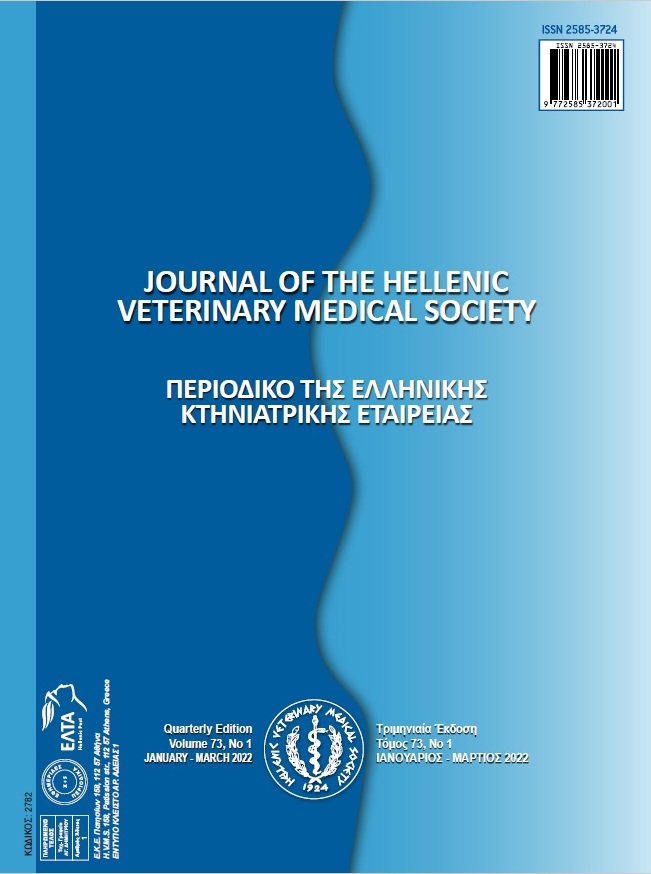Evaluation of seroprevalence and associated risk factors of Toxoplasmosis in sheep and goats in District Jhang-Pakistan
Аннотация
Toxoplasmosis is a zoonotic infection caused by a pathogenic protozoan, Toxoplasma gondii, responsible for huge economic and health losses in developing countries. The current study was conducted to assess the seroprevalence of Toxoplasmosis and associated risk factors in sheep and goats in District Jhang, Punjab, Pakistan. Blood samples (n=400) were collected from both genders of goats (n=219) and sheep (n=181) from four Tehsils of District Jhang alongwith a comprehensive questionnaire to evaluate the risk factors associated with the disease endemicity and spread. For assessing the seroprevalence, the samples were examined using Latex agglutination test. Additional data regarding hygienic conditions, water source, gender, breed, age of animal was also collected on a predesigned questionnaire. The overall seroprevalence of Toxoplasma gondii was found 34.25% (137/400) in District Jhang. Higher seroprevalence was recorded in goats {36.52% (80/219)} as compared to sheep {31.49% (57/181)}, however, it was non-significant (p>0.05). Gender-wise seroprevalence was found 32.59% (44/135) and 35.09% (93/265) in male and female animals, respectively (p>0.05). Further, the association of Toxoplasmosis between different age groups was significantly higher in older animals having age >24 months 42.75% (62/145) than younger animals with age <12 months 26.60% (29/109) and 11-24 months 31.50% (46/146) (p<0.05). The seroprevalence was also higher 40.81% (80/196) in animals drinking water from outdoor water source than in animals drinking from indoor water source 27.94% (57/204) (p<0.05). Moreover, seroprevalence was significantly higher 43.11% (97/225) in animals kept in vicinity of cats than in absence of cats 22.85% (40/175) (p<0.05). However, reproductive status, breeds, flock size had non-significant impact on the prevalence of T. gondii. Thus, it is concluded that the presence of cats near animals, larger flock size, older age of animals, and poor hygienic conditions are main risk factors of Toxoplasmosis in sheep and goats and these could be a potential threat of infection for livestock industry and public health.
Article Details
- Как цитировать
-
Zafar, M. A., Shafique, M., Zahoor, M. A., Saqalein, M., Aslam, B., Arshad, M. I., Waheed, U., & Kashif, M. (2022). Evaluation of seroprevalence and associated risk factors of Toxoplasmosis in sheep and goats in District Jhang-Pakistan. Journal of the Hellenic Veterinary Medical Society, 73(1), 3881–3888. https://doi.org/10.12681/jhvms.26205
- Выпуск
- Том 73 № 1 (2022)
- Раздел
- Research Articles

Это произведение доступно по лицензии Creative Commons «Attribution-NonCommercial» («Атрибуция — Некоммерческое использование») 4.0 Всемирная.
Authors who publish with this journal agree to the following terms:
· Authors retain copyright and grant the journal right of first publication with the work simultaneously licensed under a Creative Commons Attribution Non-Commercial License that allows others to share the work with an acknowledgement of the work's authorship and initial publication in this journal.
· Authors are able to enter into separate, additional contractual arrangements for the non-exclusive distribution of the journal's published version of the work (e.g. post it to an institutional repository or publish it in a book), with an acknowledgement of its initial publication in this journal.
· Authors are permitted and encouraged to post their work online (preferably in institutional repositories or on their website) prior to and during the submission process, as it can lead to productive exchanges, as well as earlier and greater citation of published work.



